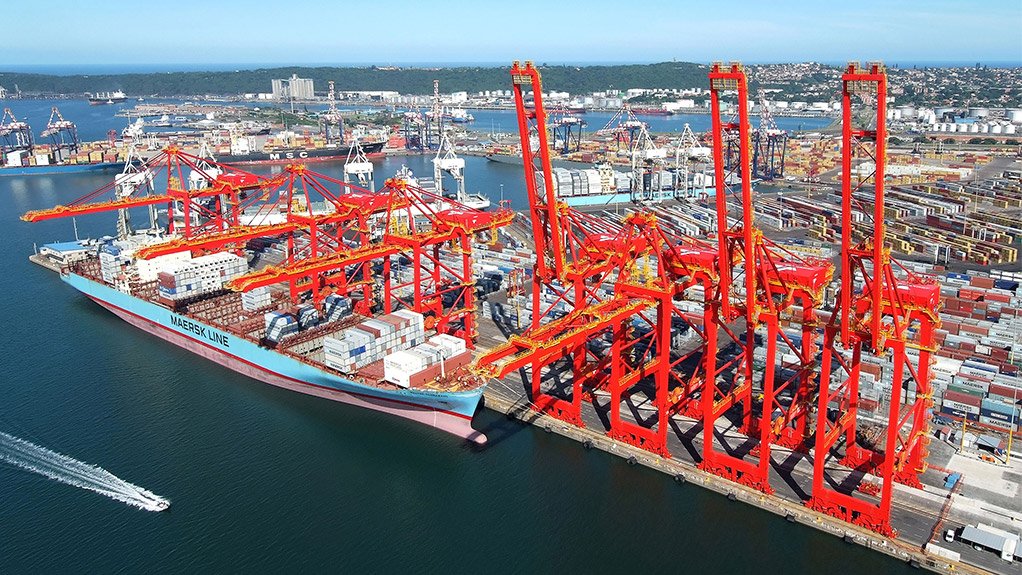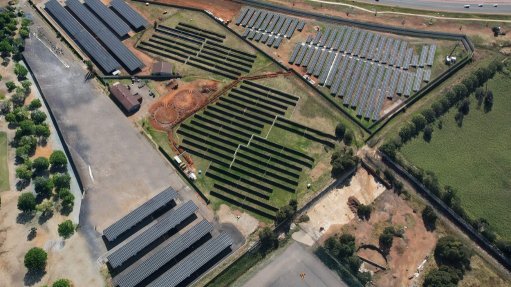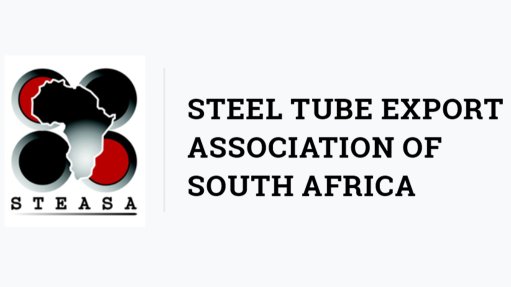Failure not an option at DCT berth deepening project, says TNPA
Transnet’s R7-billion megaproject to create deeper berths at the Durban Container Terminal (DCT) Pier 2’s North Quay will create some disruption and require close collaboration.
However, given that this is the first project to be funded by the Brazil, Russia, India, China and South Africa's (Brics') New Development Bank, failure is not an option, Transnet National Ports Authority (TNPA) CE Shulami Qalinge told a gathering of port stakeholders in Durban on Tuesday.
“We are looking for input. It is a bit tricky because it is a brownfield project that comes with its own challenges but I am sure that, if we work together, it will be a great success. It is a flagship project not just for South Africa but for the continent . . . We would love the Brics bank to fund other projects but we need to prove that we have what it takes so that they can have more confidence in us,” she said.
Executives from TNPA, Transnet Port Terminals (TPT) and Transnet Group Capital (TGC) confirmed that, nearly two years after it first went to market, the berth deepening project was finally about to get under way with the contractor due to move on site in October.
Johnny Mokheseng, the principal project manager at TGC, said the multibillion-rand main marine construction works package had been awarded to the CMI Emtateni Joint Venture in July.
Its four entities are Italian construction company CMC Di Ravenna and its 51% black-owned South African company CMI Infrastructure, which is a ten-year-old unincorporated joint venture with PG Mavundla Engineering, the Omame Emtateni Empowerment Group Consortium, a combination of five local, independently owned, black-women-owned companies and the Masinya Emtateni Empowerment Group Consortium.
An independent Environmental Compliance Officer (ECO) package was awarded to GIBB to audit environmental compliance on the project.
CMI is responsible for the reconstruction, deepening and lengthening of berths 203 to 205.
Currently, Super Post Panamax vessels of 9 200 twenty-foot equivalent unit (TEUs) and larger take up two berths on the North Quay, shrinking port capacity. Larger vessels can only enter the channel at high tide resulting in delays and vessel queues at outer anchorage.
Mokheseng said the original quay walls were built during the seventies to accommodate 1 000 TEU vessels and 4 t wharf cranes.
“The sizes of vessels and cranes have changed over time and the berth is now operating beyond its original design specifications. Currently, the DCT berths can only safely accommodate Post Panamax vessels with drafts less than 12.2 m and cannot accommodate fully laden larger Post Panamax vessels with drafts of 14.5 m operating on the east-west trade route.”
For safety reasons, these vessels have to enter the port partially laden and on the high tide window. Often, vessels have an under keep clearance of only 600 mm. Ideally, the required under keep clearance should be 10% which is 1.5 m.
A new quay wall will be built 50 m seawards of the existing quay wall along berths 203 to 205. The existing quay wall will be deepened from -12.8 m to -16.5 m Chart Datum Port (CDP) and lengthened from 914 m to about 1 210 m which will allow for the simultaneous berthing of three 350-m-long Post Panamax vessels.
The turning basin and approach channel serving berths 203 to 205 will be dredged and deepened from -12.8 m to -16.5 m CDP. This is expected to prevent some of the groundings that have been common in the port.
Seven existing 80-t ship-to-shore cranes at DCT’s Pier 2 will also be modified to suit the profile of the new quay wall structure and to serve berths 205 to 203. The mooring system will be upgraded and significantly larger bollards will be used.
To minimise expected disruptions, this megaproject will be completed in three phases, starting with berth 205, followed by berth 204 and ending with berth 203. This staggered approach will ensure that the terminal can accommodate two vessels at any given time.
Mokheseng said it was important to ensure that the existing berth capacity of two-million TEUs at DCT Pier 2 during construction was sustained and ultimately restored to a capacity of 2.9-million TEUs.
The project is expected to take over five years. The first phase – berth 205 – is due to be completed by April 2021, followed by Phase 2 (berth 204) in August 2022 and Phase 3 (berth 203) by March 2025.
The balance of the landside works will be undertaken post the marine works.
He said the project was expected to result in around R2-billion in procurement in KwaZulu-Natal. It would create 7 500 work opportunities during the life of project and 18 000 long-term, sustainable jobs across the supply chain.
Durban port acting manager Zola Nkowane said a project of this scale was urgently needed in the Durban port, which handled 65% of containerised cargo in South Africa. Whereas Durban had been regarded as the top port in the southern hemisphere for a number of years, it had now dropped to number four. This project would help it regain its position.
Both Nkowane and Transnet chief capital officer Krishna Reddy said close cooperation between port users, and the applications of lessons learnt during the upgrade of the Maydon Warf berths, would help mitigate disruptions.
Reddy said plans were in place to handle deviations of cargo within the Port of Durban, bring in additional equipment from other ports and even divert ships to other ports in the system if necessary.
He stressed that this was not an isolated project. Associated investment projects in the port included upgrading the equipment fleet and staking areas, creating an alternative access point to the port in conjunction with the eThekwini municipality to help alleviate congestion, and replanning and reconfiguring the back of port areas.
Extending container operations to Salisbury Island and the building of the Durban Dig Out Port on the old airport site were still on Transnet’s “planning horizon,” he said.
Article Enquiry
Email Article
Save Article
Feedback
To advertise email advertising@creamermedia.co.za or click here
Comments
Press Office
Announcements
What's On
Subscribe to improve your user experience...
Option 1 (equivalent of R125 a month):
Receive a weekly copy of Creamer Media's Engineering News & Mining Weekly magazine
(print copy for those in South Africa and e-magazine for those outside of South Africa)
Receive daily email newsletters
Access to full search results
Access archive of magazine back copies
Access to Projects in Progress
Access to ONE Research Report of your choice in PDF format
Option 2 (equivalent of R375 a month):
All benefits from Option 1
PLUS
Access to Creamer Media's Research Channel Africa for ALL Research Reports, in PDF format, on various industrial and mining sectors
including Electricity; Water; Energy Transition; Hydrogen; Roads, Rail and Ports; Coal; Gold; Platinum; Battery Metals; etc.
Already a subscriber?
Forgotten your password?
Receive weekly copy of Creamer Media's Engineering News & Mining Weekly magazine (print copy for those in South Africa and e-magazine for those outside of South Africa)
➕
Recieve daily email newsletters
➕
Access to full search results
➕
Access archive of magazine back copies
➕
Access to Projects in Progress
➕
Access to ONE Research Report of your choice in PDF format
RESEARCH CHANNEL AFRICA
R4500 (equivalent of R375 a month)
SUBSCRIBEAll benefits from Option 1
➕
Access to Creamer Media's Research Channel Africa for ALL Research Reports on various industrial and mining sectors, in PDF format, including on:
Electricity
➕
Water
➕
Energy Transition
➕
Hydrogen
➕
Roads, Rail and Ports
➕
Coal
➕
Gold
➕
Platinum
➕
Battery Metals
➕
etc.
Receive all benefits from Option 1 or Option 2 delivered to numerous people at your company
➕
Multiple User names and Passwords for simultaneous log-ins
➕
Intranet integration access to all in your organisation





















